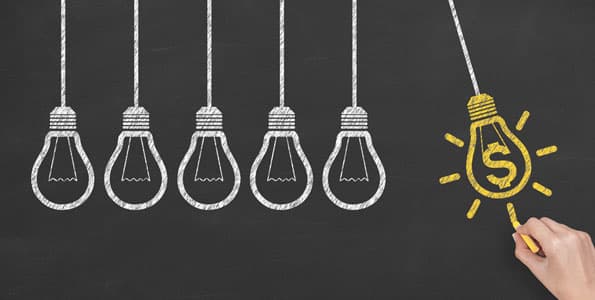Why You Shouldn’t Dismiss Traditional Financing for Energy Improvements

The initial cost of energy-efficiency retrofits is the single biggest hurdle to initiating projects. That’s because the cost of a project is more salient than the amount of money to be saved by energy efficiency. But what if you compare the cost of a project with the cost of energy wasted instead?
The two propositions are the same, but the second one shifts focus to costs on both sides of the equation. A retrofit project costs money but so does not doing a project, especially for grocery stores, where energy consumption is among the highest of all commercial buildings and profit margins are thin.
In a typical grocery store, about 90 percent of end-use energy is accounted for by refrigeration (56%), lighting (22%), and HVAC (12%). Energy-efficiency upgrades affecting these areas could reduce the electric bill by as much as $10,000 per month in a 50,000 square-foot store (based on $0.11/kWh). In this scenario, the store is paying $10,000 a month to use more energy than it needs to.
Project- and store-specific vary, of course, but this paints a pretty compelling picture of how powerful energy efficiency can be, which eases the leap over the related hurdle of financing.
In a previous post, I covered on-bill financing, a program available from a number of utilities whereby energy-efficiency retrofit projects are financed at very low or zero interest. But what about stores that aren’t served by one of those utilities? Is traditional financing a deal breaker? The answer is: It doesn’t have to be.
Financing for positive cash flow is more cost effective than paying for wasted energy
The key is structuring a loan so that the monthly payment is less than the money saved on the utility bill. Another way of looking at this is by scrutinizing your store’s budget. Chances are your store has already budgeted for a retrofit project, but it’s not obvious because the funds are “hidden” in the line item for energy expenses.
The difference in monthly loan repayment and pre-project utility expenses gives you money you didn’t have before. It can be used to pay down the loan more quickly or be applied directly to profits.
Even in a case where financing results in a monthly payment that’s equal to money saved in reduced energy consumption, it still makes sense. Once the loan is paid off, the savings from reduced energy consumption goes directly to your store’s bottom line. Without doing the project, you will continue to pay what you’ve always paid for energy – or more if rates rise.
Energy efficiency brings other benefits
Offsetting the cost of financing a project through energy savings is only part of the story. Long before you’ve paid for the project, you’ll reap the benefits of an improved store environment that comes with more comfortable aisle temperatures for shoppers, lighting that enhances effective merchandising, and lower or deferred maintenance costs due to new equipment.